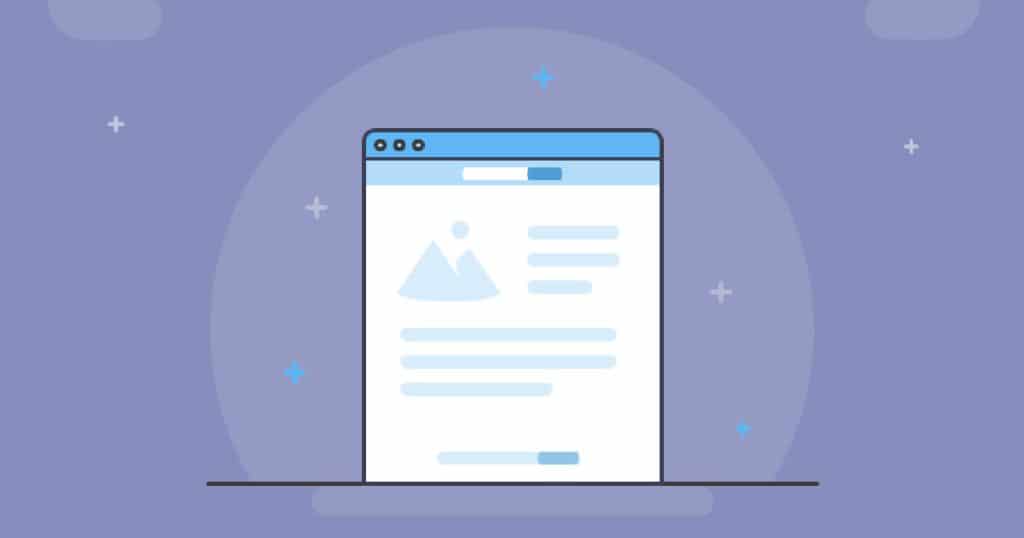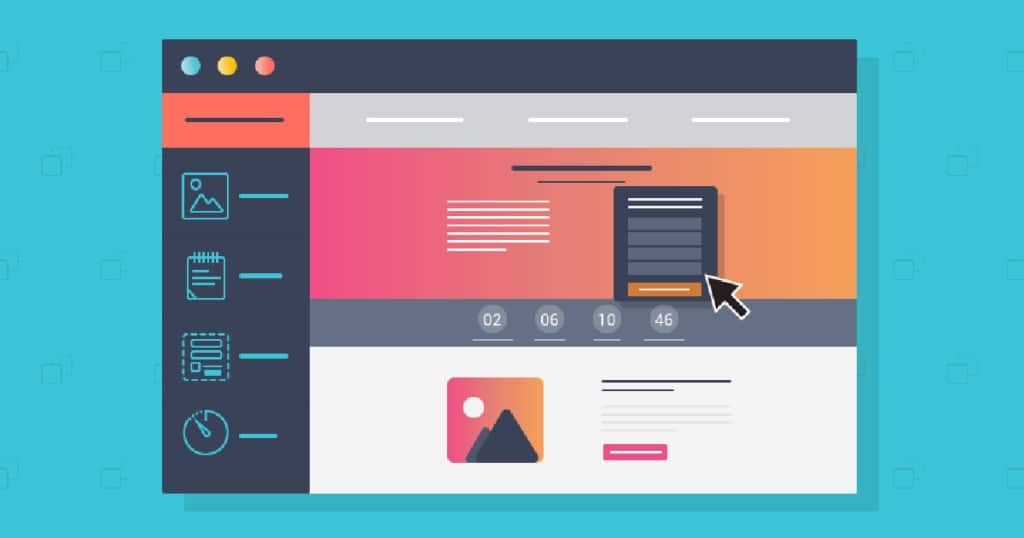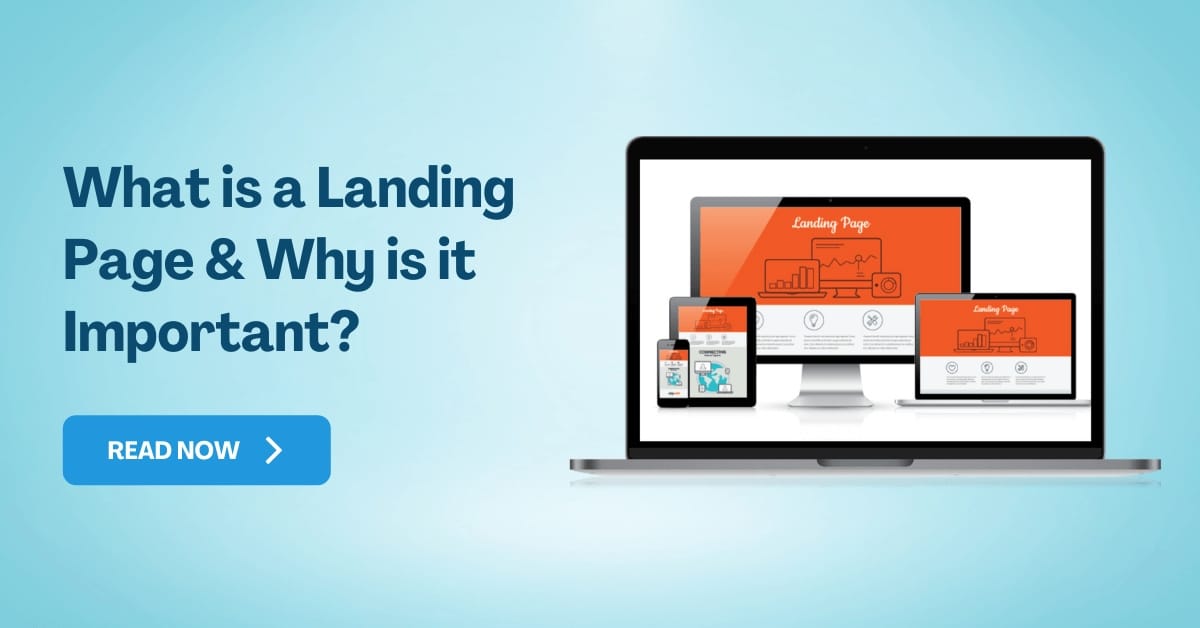A landing page is a standalone web page that is designed to convert visitors into customers or leads. It is often used as the entry point for a website and is typically the first thing that a visitor will see when they click on a link from a search engine, social media, or an advertisement.
A landing page is different from other pages on a website in that it is designed to achieve a specific goal, such as getting a visitor to sign up for a newsletter, download a free trial, or make a purchase. The design and content of a landing page are optimized to persuade the visitor to take the desired action.
- 5 key elements of a successful landing page:

1- Headline and Subheadline:
The headline and subheadline of a landing page are the first things a visitor will see, and they should be attention-grabbing and clearly communicate the main benefit of your product or service. The headline should be bold and easy to read, while the subheadline can provide more information and context.
It’s important to remember that the headline and subheadline are the first impression that a visitor will have of your landing page, so it should be made clear what the visitor can expect if they choose to stay on the page. In addition, the headline and subheadline should be closely related to the product or service being offered and should communicate the main benefit that the visitor will get from it.
2- Unique Value Proposition:
A unique value proposition (UVP) is a statement that clearly communicates the unique benefit of your product or service. It should be prominently displayed on the landing page and clearly explain how your offering is different from others in the market. The UVP statement should be concise and to the point and should convey the main benefit that the visitor will get from the product or service.
Furthermore, it should be easily understandable and should be able to grab the visitor’s attention. Additionally, the UVP statement can be used to target a specific audience and to tailor it to the specific needs of that audience. By having a clear and compelling UVP, you can increase the chances of converting visitors into customers.
3- Visual Elements:
Visual elements such as images and videos can help to break up text and make the landing page more engaging. They should be used to illustrate the benefits of your product or service and should be high-quality and relevant to the content of the page. Using visual elements can help to enhance the overall design of the landing page, and can also help to make it more memorable.
In addition, it can also be used to convey information that is otherwise difficult to express in words. Using images or videos of the product or service in use can provide a sense of its functionality and can help the visitors envision themselves using it.
4- Call to Action:
A clear call to action (CTA) is essential for a successful landing page. It should be prominently displayed and should clearly communicate the next step a visitor should take, whether it’s signing up for a free trial, making a purchase, or downloading a whitepaper. The CTA should be easily noticeable and should stand out from the rest of the elements on the page so that visitors can’t miss it.
Additionally, the language used in the CTA should be action-oriented and should encourage the visitor to take the next step. This can be achieved by using language like “Sign up now” or “Download our whitepaper.”
5- Optimization for Conversion:
A landing page should be optimized for conversion, which means that it is designed to encourage visitors to take a specific action. This can be achieved through A/B testing different elements of the page, such as the headline, images, and CTA, to see which versions lead to the highest conversion rates. By using A/B testing, you can determine which elements of the page are working and which are not, and make changes accordingly.
Additionally, it can also be used to test different variations of the same elements and see which one performs the best. Furthermore, by regularly monitoring and analyzing the performance of the landing page, you can continuously make improvements and optimize it for better conversion rates.
- Why are landing pages important?
Landing pages are an essential aspect of any digital marketing strategy. They are the first point of contact that potential customers have with a business and play a crucial role in converting visitors into paying customers. Here are some key reasons why landing pages are so important.
First, landing pages help to increase conversions. By focusing on a specific product or service, landing pages provide visitors with a clear call to action, such as “buy now” or “sign up.” This clear and direct message helps to guide visitors towards making a purchase or signing up for a service, resulting in increased conversions.
Second, landing pages are an effective way to track and measure the success of a marketing campaign. By using tools like Google Analytics, businesses can track the number of visitors to a landing page, the number of conversions, and the conversion rate. This allows businesses to make data-driven decisions about how to optimize their marketing campaigns for better results.
Third, landing pages are a cost-effective way to market a business. Unlike traditional advertising methods, such as print ads or TV commercials, landing pages can be created and optimized for very little cost. Additionally, landing pages can be used to target specific groups of people, such as those who have shown an interest in a specific product or service, which helps to increase the ROI of a marketing campaign.
Landing pages are an essential aspect of any digital marketing strategy. They help to increase conversions, provide a way to track and measure the success of a marketing campaign and are cost-effective. By understanding the importance of landing pages, businesses can create effective campaigns that convert visitors into paying customers.
- How can you create a landing page?

1- Understand your audience:
Before creating your landing page, it’s important to have a clear understanding of your target audience. Identify their pain points, needs, and goals, and tailor the content and design of your page to address them. Knowing your audience will help you to create a page that resonates with them and is more likely to convert visitors into customers.
One way to understand your audience is to create buyer personas, which are fictional characters that represent your ideal customer. These personas should include demographic information, such as age and location, as well as information about their pain points, goals, and purchasing habits. Once you have created your buyer personas, use them as a guide when creating your landing page to ensure that it is tailored to your target audience.
2- Define your call to action:
A landing page should have a clear and specific call to action (CTA) that tells visitors what they should do next. This could be to make a purchase, sign up for a newsletter, or register for a webinar. The CTA is the most important element of your landing page, as it is what drives conversions. If your CTA is unclear or not prominently displayed, visitors may leave your page without taking any action.
When creating your CTA, make sure it is action-oriented and benefits-focused. Instead of simply asking visitors to “buy now,” for example, try using a CTA such as “Get 50% off your first purchase today.” Additionally, make sure your CTA stands out on the page by using contrasting colors and placement above the fold, so it is the first thing a visitor sees when they land on your page.
3- Keep it simple:
Keep the design of your landing page simple and uncluttered. Use a clear and easy-to-read font, and make sure the page is easy to navigate. Avoid using too many images or videos, as they can slow down the page and distract visitors from your CTA. A simple design will help visitors to focus on the most important elements of your page, such as your CTA and your value proposition.
When designing your landing page, use whitespace effectively to create a clean and uncluttered layout. This will make it easier for visitors to scan the page and find the information they need. Additionally, use a clear and easy-to-read font, such as Arial or Verdana, to make sure your content is easy to read on any device.
4- Use high-quality images and videos:
If you do use images and videos on your landing page, make sure they are high-quality and relevant to the page’s content. They should help to convey your message and make the page more engaging. High-quality images and videos can help to create an emotional connection with your visitors and increase the chances of them taking action.
When selecting images and videos for your landing page, make sure they are high-resolution and look professional. This will help to create a sense of trust and credibility with your visitors. Additionally, make sure the images and videos you use are relevant to the page’s content, and they should support your message and help to convey your value proposition.
5- Test and optimize:
After your landing page is live, be sure to test it and gather feedback. Use tools like Google Analytics to track visitor behavior and see which elements are working well and which are not. Use this information to make changes and optimize your page to improve conversions. Continual testing and optimization will help you to improve the performance of your landing page over time.
One way to test your landing page is to create A/B tests, which involve creating two versions of a page and then testing them with different visitor groups to see which one performs better. You can test different elements of the page such as the headline, CTA, or layout. Use tools like Google Analytics to track visitor behavior and conversion rates, and use the data to make informed decisions about what changes to make.
6- Optimize for SEO:
Landing pages should be search engine optimized (SEO) so that they can be easily found by search engines and users. This includes adding keywords to the page title and meta tags, as well as including relevant and high-quality content on the page. Optimizing your landing page for SEO will increase its visibility and improve its ranking in search engine results, making it more likely that potential customers will find it.
One way to optimize your landing page for SEO is to include keywords in the page title and meta tags. These elements are used by search engines to understand the content of a page, so it’s important to include keywords that are relevant to the page’s content and that people are likely to search for. Additionally, make sure to include high-quality content on the page that provides value to the visitor and answers their questions. This will not only help with SEO but also will increase the chances of visitors staying and converting to the page.
7- Keep it mobile-friendly:
More and more users are browsing the internet from their mobile devices, so it’s important to make sure your landing page is optimized for mobile viewing. This includes using a responsive design that adjusts to different screen sizes and making sure buttons and links are easy to click on a smaller screen. A mobile-friendly landing page will ensure that all visitors, regardless of the device they are using, have a positive experience and are more likely to take action.
One way to make sure your landing page is mobile-friendly is to use a responsive design. This means that the page will automatically adjust to fit different screen sizes, and will ensure that all visitors have a great experience, regardless of the device they are using. Additionally, make sure buttons and links are large enough to be easily clicked on a smaller screen and that the text is readable and not too small to read on a mobile device.
In conclusion, a landing page is a standalone web page specifically designed for a marketing or advertising campaign. It is important because it allows businesses to direct traffic from various sources to a specific, targeted page, increasing the chances of converting visitors into customers. A well-designed landing page can also help to improve the overall user experience and can provide valuable data for optimization and analysis. Overall, a landing page is a crucial element for any successful online marketing strategy.
Related articles:
 Anas is our go-to copywriter with a knack for crafting persuasive and high-converting eCommerce landing pages. His passion for words and understanding of consumer psychology helps turn visitors into loyal customers. When he's not refining his copy, Anas enjoys exploring the latest digital marketing trends and experimenting with new writing techniques. His blend of creativity and strategic thinking makes him an indispensable part of our energetic team.
Anas is our go-to copywriter with a knack for crafting persuasive and high-converting eCommerce landing pages. His passion for words and understanding of consumer psychology helps turn visitors into loyal customers. When he's not refining his copy, Anas enjoys exploring the latest digital marketing trends and experimenting with new writing techniques. His blend of creativity and strategic thinking makes him an indispensable part of our energetic team.












